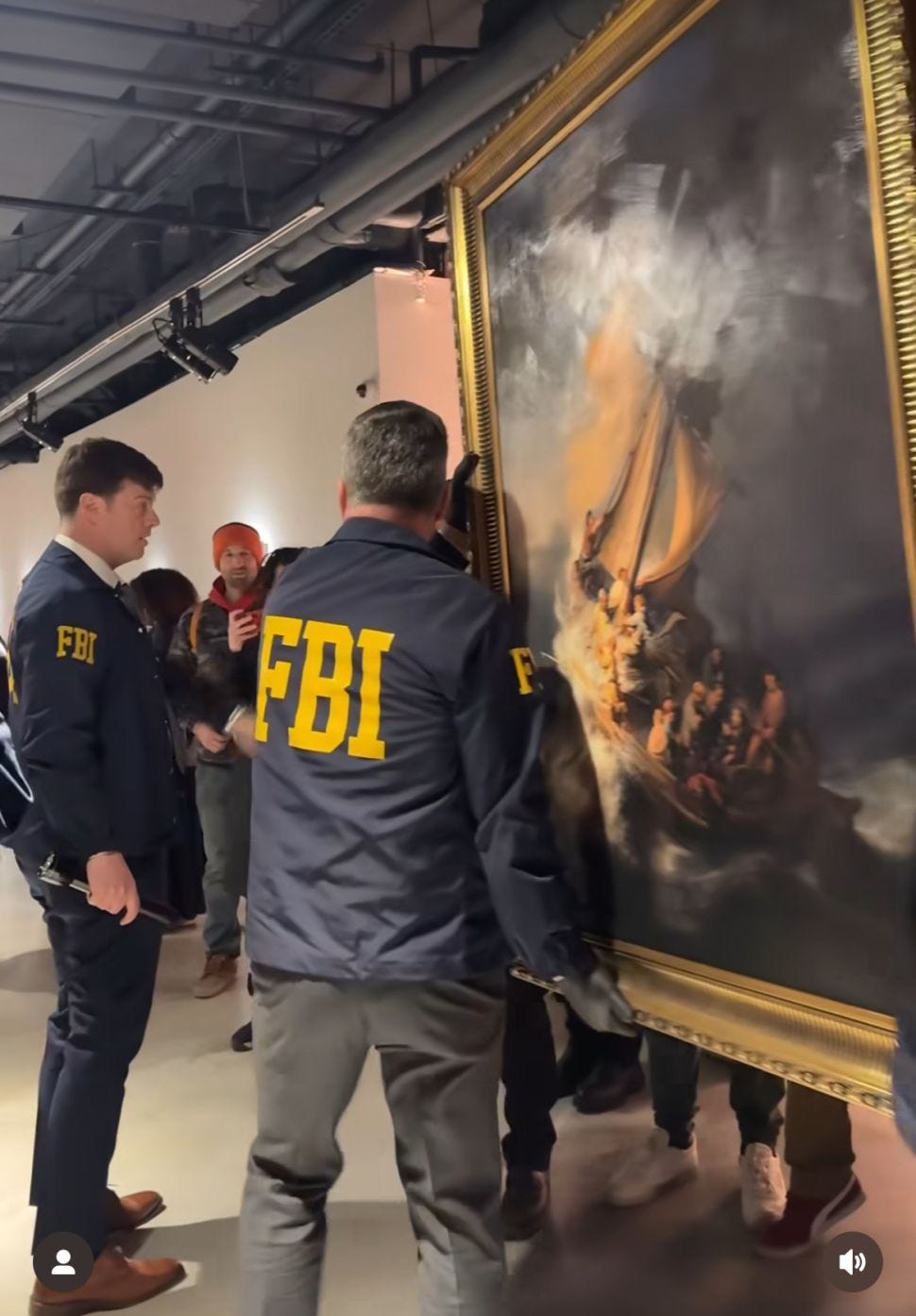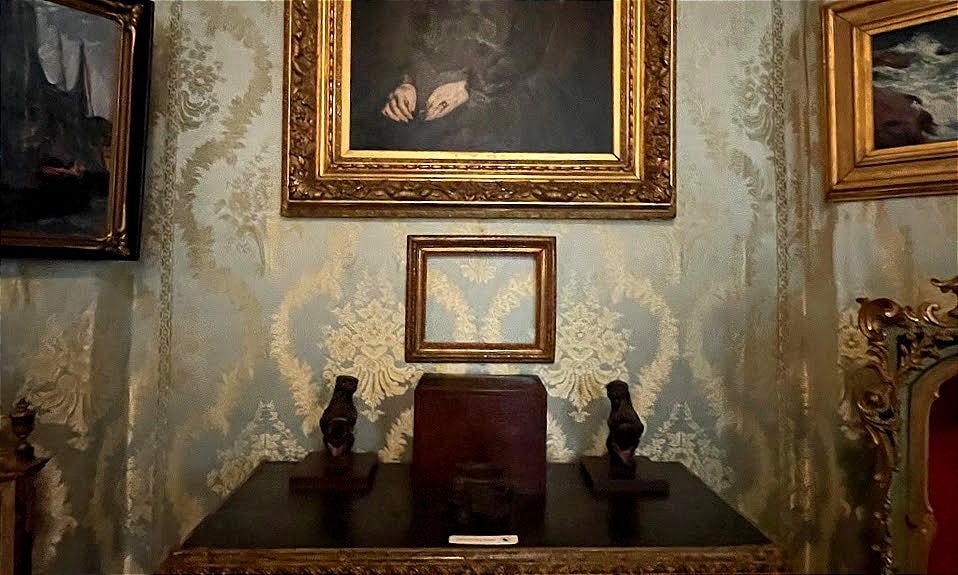Finding Art in the Age of Misinformation: the Gardner Heist 35 Years Later
Poisoning the Well: Art Crime & the Media

This week’s note is brought to you by last week’s “FBI seizure” of a “stolen Rembrandt”—a stunt you may have seen currently circulating on social media, pulled by a Chelsea art gallery and Hollywood movie producers to promote the upcoming film Any Day Now. Intimately and brilliantly dissected by the Observer, this “performance piece” can be seen via instagram reel, where men in FBI clad jackets appear to carry Rembrandt’s golden-framed Christ in the Storm on the Sea of Galilee—last seen before it was stolen from the Isabella Stewart Gardner Museum in 1990—through a crowd of gallery visitors.
Seeing the video, an uncomfortable confusion washes over—to the trained eye, the painting does not appear original, but there was no further information available from the video or the post, and much like the Observer, I failed to find anything of substance until the next day. Seeing the online response, and the many unread DMs questioning the situation, there is no mistaking the hoopla and confusion. The researcher in me is rolling their eyes; the optimist hopes this brings new eyes upon the works; and my threads of socialism are commending the plotters for their commentary on our current digital plague of misinformation. False information tends to travel faster. What better way to promote a fictional movie about an art heist?
Now, I am also hearing every past Modern & Contemporary Art professor, in my head, contest that performance pieces such as this, are meant to do just this: stir the pot and get people talking. It is vital though, that we get people talking about the right information, and so this space will hopefully begin to connect the upcoming fictional movie with more factual resources on the 1990 robbery at the Isabella Stewart Gardner Museum.
You will find a walk through of the theft by the Isabella Stewart Gardner Museum here, hosted by the museum’s Director of Security, Anthony Amore.
I highly recommend the WBUR and Boston Globe podcast from 2018, which deep dives into the case with Director of Security, Anthony Amore and follows up on potential leads since the theft. Their website also features a multitude of resources, including evidence, recreations, and more.
Netflix released a documentary in 2021, which features original news footage and discussion with a number of key figures related to the case, including: Anne Hawley, Museum Director at the time of the theft; Boston Globe reporter Shelley Murphy; Criminal Defense Attorney, Martin Leppo; Myles Connor, art thief; and investigative journalist Stephen Kurkjian.
While not the culprit, art thief Myles Connor wrote a book in 2009 about his relationship to the case and larger role as an art thief, titled The Art of the Heist: Confessions of a Master Thief.
I have yet to read Stephen Kurkjian’s book on the case, Master Thieves: The Boston Gangsters Who Pulled Off the World's Greatest Art Heist, published in 2015. Kurkjian reported on the case for over twenty years, and his book explores his theory behind the robbery alongside the connections the heist has to Boston’s gangs.
You can a virtual tour of the Isabella Stewart Gardner Museum galleries here.
NPR Boston hosted a brief conversation on the 30th anniversary of the heist.
There have also been a number of historical fiction books written related to the robbery, a short list can be found at Art in Fiction.
This is just the start, resources on the heist continue to emerge as we diligently keep looking and hoping for the 13 masterpieces to re-emerge. I will continue to update this list, especially as we recognize the 35th anniversary of the heist tomorrow.






